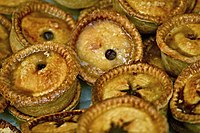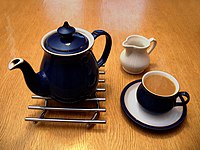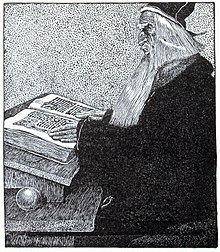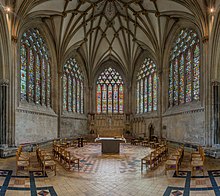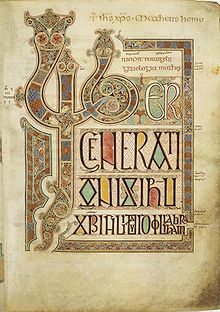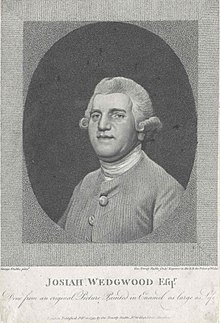Culture of England
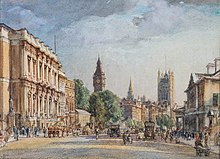

| Culture of England |
|---|
 |
| History |
| People |
| Languages |
|
Folklore |
| Cuisine |
| Religion |
|
Art |
| Literature |
The culture of England is diverse, and defined by the cultural norms of England and the English people. Owing to England's influential position within the United Kingdom it can sometimes be difficult to differentiate English culture from the culture of the United Kingdom as a whole.[1] However, tracing its origins back to the early Anglo-Saxon era, England cultivated an increasingly distinct cultural heritage. This cultural development persisted throughout the subsequent Anglo-Norman era, and the reign of the Plantagenet Dynasty.
Humour, tradition, and good manners are characteristics commonly associated with being English.
Many scientific and technological advancements originated in England, the birthplace of the Industrial Revolution. The country has played an important role in engineering, democracy, shipbuilding, aircraft, motor vehicles, mathematics, science and sport.
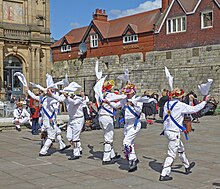
Architecture
Many ancient
English architecture begins with the
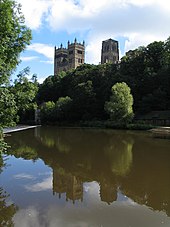
Many
All these saints brought pilgrims to their churches, but among them the most renowned was Thomas Becket, the late Archbishop of Canterbury, assassinated by henchmen of King Henry II in 1170. As a place of pilgrimage Canterbury was, in the 13th century, second only to Santiago de Compostela. In the 1170s Gothic architecture was introduced at Canterbury and Westminster Abbey. Over the next 400 years it developed in England, sometimes in parallel with and influenced by Continental forms, but generally with great local diversity and originality.
Following the
Secular
One of the most acclaimed English architects was
The

Landscape gardening as developed by
Inspired by the great
Following the building of the world's first
Art and design
England has Europe's earliest and northernmost ice-age
As in most of Europe at the time, metalwork was the most highly regarded form of art by the
In the 18th century,
Pictorial satirist
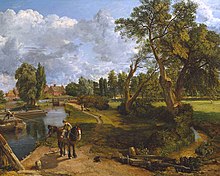
During the
The Pre-Raphaelite Brotherhood achieved considerable influence after its foundation in 1848 with paintings that concentrated on religious, literary, and genre subjects executed in a colourful and minutely detailed style. Its artists included John Everett Millais, Dante Gabriel Rossetti and subsequently Edward Burne-Jones. Also associated with it was the designer William Morris, whose efforts to make beautiful objects affordable for everyone led to his wallpaper and tile designs to some extent defining the Victorian aesthetic and instigating the Arts and Crafts movement. The Royal Society of Arts is an organisation committed to the arts and culture.[32]
The
Heritage and tourism
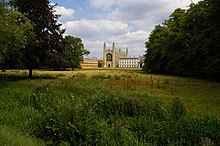
A number of
English Heritage is a governmental body with a broad remit of managing the historic sites, artefacts and environments of England. It is currently sponsored by the Department for Culture, Media and Sport. English Heritage manages more than 400 significant buildings and monuments in England. They also maintain a register of thousands of listed buildings,[34] those which are considered of most importance to the historic and cultural heritage of the country.[35]
17 of the 25 United Kingdom
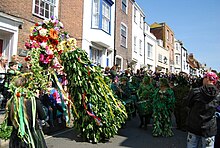
London's British Museum hosts a collection of more than seven million objects[40] is one of the largest and most comprehensive in the world, sourced from every continent, illustrating and documenting the story of human culture from its beginning to the present.[41] The library has two of the four remaining copies of the original Magna Carta (the other two copies are held in Lincoln Castle and Salisbury Cathedral) and has a room devoted solely to them. The British Library Sound Archive has over six million recordings, many from the BBC Sound Archive, including Winston Churchill's wartime speeches.
The British Library in London is the national library and is one of the world's largest research libraries, holding over 150 million items in all known languages and formats; including around 25 million books.[42] The most senior art gallery is the National Gallery in Trafalgar Square, which houses a collection of over 2,300 paintings dating from the mid-13th century to 1900.[43] The Tate galleries house the national collections of British and international modern art; they also host the famously controversial Turner Prize.[44] The Ashmolean Museum was founded in 1677 from the personal collection of Elias Ashmole, was set up in the University of Oxford to be open to the public and is considered by some to be the first modern public museum.[45] In 2011 there were more than 1,600 museums in England.[46] Most museums and art galleries are free of charge.[47]
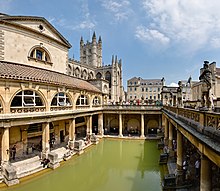
A
Tourism plays a significant part in the economic life of England. In 2018, the United Kingdom as a whole was the world's 10th most visited country for tourists,
The Parliamentary Under-Secretary of State for Arts and Heritage is the minister with responsibility over tourism in England, including museums, art galleries, public libraries and the National Archives.[53]
Literature

Early authors such as
Some of the most prominent philosophers of the Enlightenment were John Locke, Thomas Paine, Samuel Johnson and Jeremy Bentham. More radical elements were later countered by Edmund Burke, who is regarded as the founder of conservatism.[59] The poet Alexander Pope with his satirical verse became well regarded. The English played a significant role in romanticism: Samuel Taylor Coleridge, Lord Byron, John Keats, Mary Shelley, Percy Bysshe Shelley, Jane Austen, William Blake and William Wordsworth were major figures.[60]
In response to the
Due to the expansion of English into a
The 20th-century English crime writer Agatha Christie is the best-selling novelist of all time.[66] Agatha Christie's mystery novels are outsold only by Shakespeare and The Bible. Described as "perhaps the 20th century's best chronicler of English culture", the non-fiction works of George Orwell include The Road to Wigan Pier (1937), documenting his experience of working class life in the north of England.[67] Orwell's eleven rules for making tea appear in his essay "A Nice Cup of Tea", which was published in the London Evening Standard on 12 January 1946.[68]
In 2003 the
Music
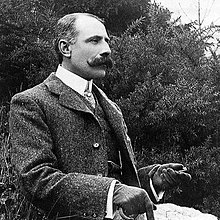
England has a long and rich musical history, and more English people attend live music performances than football matches.
Some of the best-known songs are
England, like most European countries, has undergone a roots revival in the last half of the 20th century. English music has been an instrumental and leading part of this phenomenon, which peaked at the end of the 1960s and into the 1970s. The English Musical Renaissance was a hypothetical development in the late 19th and early 20th century, when English composers, often those lecturing or trained at the Royal College of Music, were said to have freed themselves from foreign musical influences, to have begun writing in a distinctively national idiom.[73]
The achievements of the

The emergence of figures such as
A new trend emerged from
Cinema
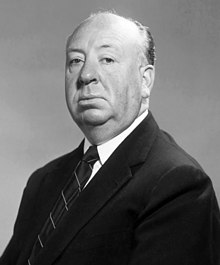
England has had a considerable influence on the history of the cinema, producing some of the greatest actors, directors and motion pictures of all time, including Alfred Hitchcock, Charlie Chaplin, David Lean, Laurence Olivier, Vivien Leigh, John Gielgud, Peter Sellers, Julie Andrews, Michael Caine, Gary Oldman, Helen Mirren, Kate Winslet and Daniel Day-Lewis. Hitchcock and Lean are among the most critically acclaimed directors of all time.[80] Hitchcock's first thriller, The Lodger: A Story of the London Fog (1926), helped shape the thriller genre in film, while his 1929 film, Blackmail, is often regarded as the first British sound feature film.[81]
Major film studios in England include

The
Theatre
The peak of English drama and theatre is said to be the age of
Archaeological excavations on the foundations of the Rose and the Globe in the late 20th century showed that all the London theatres had individual differences, but their common function necessitated a similar general plan.[92] The public theatres were three stories high, and built around an open space at the centre. Usually polygonal in plan to give an overall rounded effect, although the Red Bull and the first Fortune were square. The three levels of inward-facing galleries overlooked the open centre, into which jutted the stage: essentially a platform surrounded on three sides by the audience. The rear side was restricted for the entrances and exits of the actors and seating for the musicians. The upper level behind the stage could be used as a balcony, as in Romeo and Juliet and Antony and Cleopatra, or as a position from which an actor could harangue a crowd, as in Julius Caesar.[93]

The growing population of England, the growing wealth of its people, and their fondness for spectacle produced a dramatic literature of remarkable variety, quality, and extent. Genres of the period included the
The re-opening of the theatres in 1660 after the Restoration of
Restoration audiences liked to see good triumph in their tragedies and rightful government restored. In comedy they liked to see the love-lives of the young and fashionable, with a central couple bringing their courtship to a successful conclusion (often overcoming the opposition of the elders to do so). Heroines had to be chaste, but were independent-minded and outspoken; now that they were played by women, there was more mileage for the playwright in disguising them in men's clothes or giving them narrow escape from rape. These playgoers were attracted to the comedies by up-to-the-minute topical writing, by crowded and bustling plots, by the introduction of the first professional actresses, and by the rise of the first celebrity actors. This period saw the first professional woman playwright, Aphra Behn. In the mid-1690s, a brief second Restoration comedy renaissance arose, aimed at a wider audience.
The unsentimental or "hard" comedies of
During the second wave of Restoration comedy in the 1690s, the "softer" comedies of
As a reaction to the decadence of Charles II era productions,
Today there are a variety of theaters in London's West End. Andrew Lloyd Webber dominated the West End for many years; his musicals also conquered Broadway and were made into films. The prestigious Royal Shakespeare Company operates out of Shakespeare's hometown of Stratford-upon-Avon and performs primarily, but not exclusively, his works. Important modern playwrights are Alan Ayckbourn, John Osborne, Harold Pinter, Tom Stoppard and Arnold Wesker.
Performing arts
Large outdoor
A staple of English easide culture, the quarrelsome couple
Music hall is a type of theatrical leisure popular from the early Victorian era to the mid 20th century. The precursor to variety shows of today, music hall involved a mixture of popular songs, comedy, speciality acts and variety entertainment. English performers who honed their skills at pantomime and music hall sketches include Charlie Chaplin, Stan Laurel, George Formby, Gracie Fields, Dan Leno, Gertrude Lawrence and Harry Champion.[112][113] English music hall comedian and theatre impresario Fred Karno developed a form of sketch comedy without dialogue in the 1890s, and Chaplin and Laurel were among the music hall comedians who worked for him.[114] A leading film producer stated; "Fred Karno is not only a genius, he is the man who originated slapstick comedy. We in Hollywood owe much to him."[115]
The Notting Hill Carnival is an annual event that has taken place on the streets of Notting Hill, London since 1966.[116] Led by the British African-Caribbean community, the carnival has attracted around one million people, making it Britain's biggest street festival and one of the largest in the world.[116] Also of note is the extensive impact of Irish culture for St. Patrick's Day. The largest St Patrick's Day Parade takes place in Digbeth, Birmingham, where there is a strong Irish community.
Cuisine
Since the
The cuisine of England has, however, recently undergone a revival, which has been recognised by food critics with some good ratings in
The last half century has seen significant changes in food manufacturing, retailing and consumption;[124] an interest in different international cuisines; and the establishment of large restaurants, food outlets, coffee shops and supermarkets. However, distinctively English dishes,[125] artisanal production, delicatessens, home cooking and traditional establishments such as pubs, cafes and tearooms remain widespread. The 1990s saw the rise of the gastropub, serving traditional English dishes, and farmers' markets, where English cheeses, breads, vegetables and other items are sold.[126] Food culture in England has been taken more seriously since the 1960s due to writers and broadcasters such as Derek Cooper, Matthew Fort, Jonathan Meades and Nigel Slater.[127]
Typical English main courses include
A
An
The most popular types of fish in England, mainly imported through seaside and coastal towns,[157] are salmon, cod, haddock, tuna and prawns.[158] Fish and chips, sometimes served with mushy peas, are sold by fish and chip shops.[159] Brixham in Devon has the highest value catch in England;[160] other domestic fisheries include Cornwall and Hastings. Dover sole is so named because it could historically be sourced from the fishing port of Dover. Potted shrimps, prawn cocktail, whitebait, scallops and slices of smoked salmon, such as London Cure,[161] are starters served with a squeeze of lemon and brown bread. Oysters are cultivated along the east coast of England, for example at Whitstable. Crabs are particularly associated with the Norfolk town of Cromer. Samphire is collected in coastal areas and served with fish.[162]
Light meals and snacks include green salads served with salad cream,[163] cauliflower cheese, macaroni cheese, Welsh rarebit,[164] fishcakes, baked potatoes, cheese on toast, beans on toast, mushrooms on toast, spare ribs, Cornish pasties,[165] Scotch eggs,[166] sausage rolls, pork pies,[167] gala pie and bacon sandwiches. The sandwich was named after the Earl of Sandwich[168] and is very common as a lunchtime and picnic item with a wide range of fillings.[169] Stotties, filled with ham and pease pudding, are eaten particularly in the north-east of England. Asparagus is served with butter alone or with other ingredients such as eggs and ham; the English asparagus season runs from late April to the end of June.
A poll in 2011 found that the most popular soups in England were
English desserts include (bramley) apple pie, cherry pie, bread and butter pudding, bread pudding, fruit crumble, fruit cobbler, Eve's pudding, Dorset apple cake, baked apple, gooseberry fool, sticky toffee pudding, treacle tart, treacle sponge pudding (made with golden syrup),[178] jam roly-poly, spotted dick, bakewell tart, trifle, rice pudding, eton mess, cheesecake[179] Sussex pond pudding, summer pudding, Cabinet pudding, English custard tart and, since the 1970s, lemon meringue pie and banoffee pie.[180] Hot puddings are often served with custard.[181] Some puddings, such as jelly, blancmange and chocolate sponge with chocolate custard, are associated with school dinners. Fruit salad is a mixture of fresh fruit and canned fruits such as peaches and apricots served in syrup. Fruits grown in England include apples, pears, plums, cherries, damsons, blackberries, black currants, gooseberries, raspberries, strawberries (often served with cream) and rhubarb.[182] Ice creams are sometimes sold from ice cream vans which use distinctive chimes to attract customers[183]
The
Afternoon tea
Traditionally,




